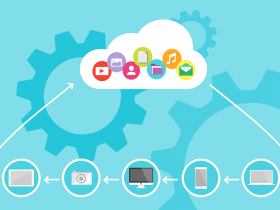The history of cellular phones is a captivating tale of technological advancement. From the initial days of unwieldy devices to the sleek, powerful smartphones of the present, this article embarks on a comprehensive exploration of the evolution of cellular phones. We’ll delve deeper into the origins, key milestones, and the profound impact these devices have had on our lives.
1. The Birth of the Cellular Phone
The concept of a mobile phone was birthed by engineer Martin Cooper in 1973. Employed at Motorola, Cooper made the first-ever cellular phone call on a prototype device known as the DynaTAC 8000X. This brick-sized phone weighed over 2 pounds and had a talk time of about 30 minutes. It marked the beginning of a revolution in communication technology.
2. Advancements in Cellular Technology
Throughout the 1980s and 1990s, cellular phones underwent a series of evolutionary leaps. The introduction of the 1G (first generation) cellular networks allowed for wider accessibility, but the phones remained bulky and had limited features compared to modern devices. The Motorola MicroTAC and Nokia Mobira Cityman were some of the iconic devices of this era.
3. The Rise of Digital Cellular Networks
The transition to digital cellular networks, starting with 2G technology, brought about significant improvements in call quality and introduced the concept of text messaging. Nokia’s iconic Nokia 3210, released in 1999, became a symbol of the mobile phone era. Its customizable covers allowed users to express their individuality.
4. The Smartphone Revolution
The 21st century witnessed a transformative shift in cellular phone history with the emergence of smartphones. BlackBerry, with its email capabilities, and the release of the Apple iPhone in 2007 revolutionized the industry. These devices combined calling, messaging, internet browsing, and a host of other features in one pocket-sized device. The iPhone’s multi-touch interface and the App Store set new industry standards.
5. Android’s Impact and Market Dominance
Google’s Android operating system entered the scene as a formidable competitor to Apple’s iOS. The open-source nature of Android led to a diverse range of smartphones, offering consumers more choices and fostering rapid innovation. Samsung, in particular, rose to prominence as a leading Android manufacturer.
6. The Present and Beyond
Today, cellular phones have become indispensable tools for work, socializing, entertainment, and more. The advent of 5G technology is ushering in even faster data speeds and greater connectivity. This promises a future where smartphones are central to every aspect of our lives, from smart homes to autonomous vehicles.
Conclusion
The history of cellular phones is a testament to human ingenuity and our insatiable appetite for constant connectivity. From Martin Cooper’s historic call on the DynaTAC to the pocket-sized supercomputers we carry today, cellular phones have come an astonishingly long way. As technology continues to evolve, it’s thrilling to imagine what the future holds for these indispensable devices and how they will further shape our world.
The journey of cellular phones is a testament to innovation’s relentless march forward, forever changing the way we connect and communicate. As we celebrate their history, let us also reflect on the responsibilities that come with this technology, ensuring that our future with cellular phones continues to be marked by advancement, convenience, and a seamless connection to the world around us.









Leave a Reply